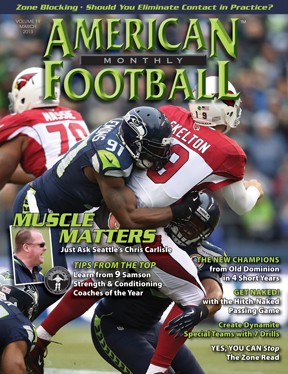Article CategoriesAFM Magazine
|
Maximizing Special Teams Practice Time – Circuit drills for both kickoffs and punt units can help improve special teams play.by: Bill RussellSpecial Teams Coordinator and Inside Linebackers Coach, Norwich University © More from this issue Anyone who has coached special teams knows that there never seems to be enough time to teach the proper techniques as well as implement your systems. Even at a school like Norwich, we end up trying to get more done, in less time. A strategy we’ve used, which has benefitted us greatly, is to set up a circuit of drills for each individual special teams unit and have all of our players rotate through this circuit. This allows us to get a lot of quality, technique-specific work done, and gives our players a chance to work each part of the progression needed to excel on any given aspect of the kicking game. All members of our staff contribute to our special teams practice. This allows me to assign each coach a position-specific drill, and allows all of our coaches to work with all the members of our program. |
|
|||||||
| HOME |
MAGAZINE |
SUBSCRIBE | ONLINE COLUMNISTS | COACHING VIDEOS |
Copyright 2025, AmericanFootballMonthly.com
All Rights Reserved





